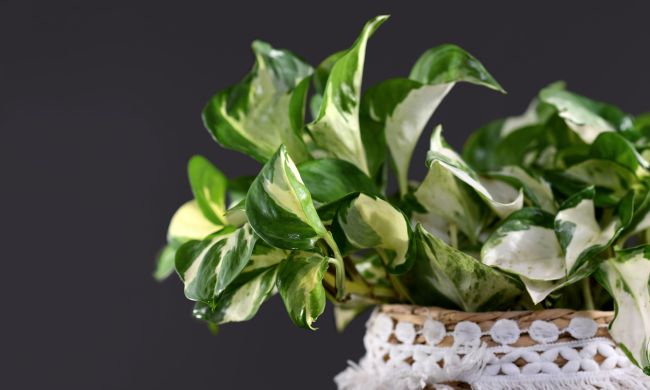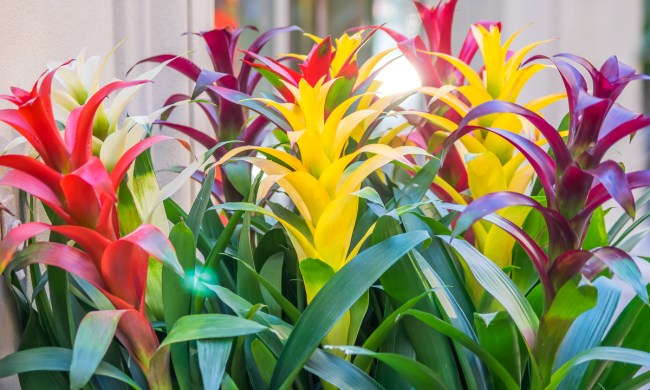If you’ve ever strolled around a plant nursery, chances are you’ve come across a striking begonia either in the indoor houseplant section or in the outdoor garden center. The begonia is a wide-ranging genus with around 2000 species that feature bold, asymmetrical leaves that come in swirls, wings, and more—and yes, they can be indoor or outdoor plants. Some have dots, others have silvery flecks, many have flowers, and most have a slightly wrinkled foliage texture. If you’ve ever wondered about how to care for a begonia and which one to bring home, we’ve rounded up general maintenance tips along with a rundown of five common species that you can add to your plant collection right now.
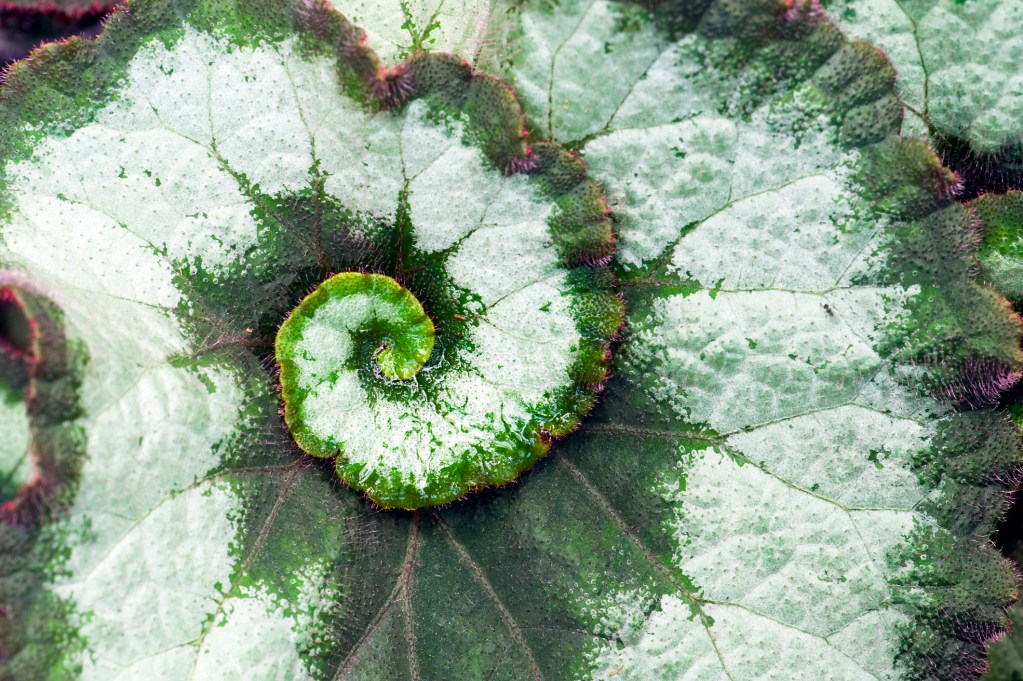
General begonia care
Maintaining begonias
Before we dive into our favorite begonias, let’s take a look at general care tips. First and foremost, keep your begonia in a moderately well-draining potting mix as opposed to a heavy garden soil or fast-draining cactus soil. Throughout the growing season, fertilize your soil once a month—diluted, all-purpose liquid food should work in a pinch for your begonia. In terms of temperature, if it’s warm enough for you, it’s warm enough for your plant.
Watering might be the trickiest thing about begonias, but you’ll learn what your plant likes with time. Before thoroughly watering your begonia, make sure that at least an inch of the top part of the soil is dry. Don’t overwater: Excess dampness can cause the begonia to develop root rot and attract fungus gnats. To avoid other pests, remove dead leaves and blooms and occasionally check the undersides of your leaves. While you want to be prudent with watering, remember that begonias prefer humid environments, so keep a humidifier at the ready or leave a pebble tray to keep their leaves from getting crispy.
Identifying begonias by roots
The three main types of begonias are tuberous, rhizomatous, and fibrous—which, as you may have already guessed, describe their root systems. Tuberous kinds have a fleshy storage organ, rhizomatous ones have thick creeping rhizomes, and fibrous ones have feathery root systems similar to many houseplants.
Types of begonia
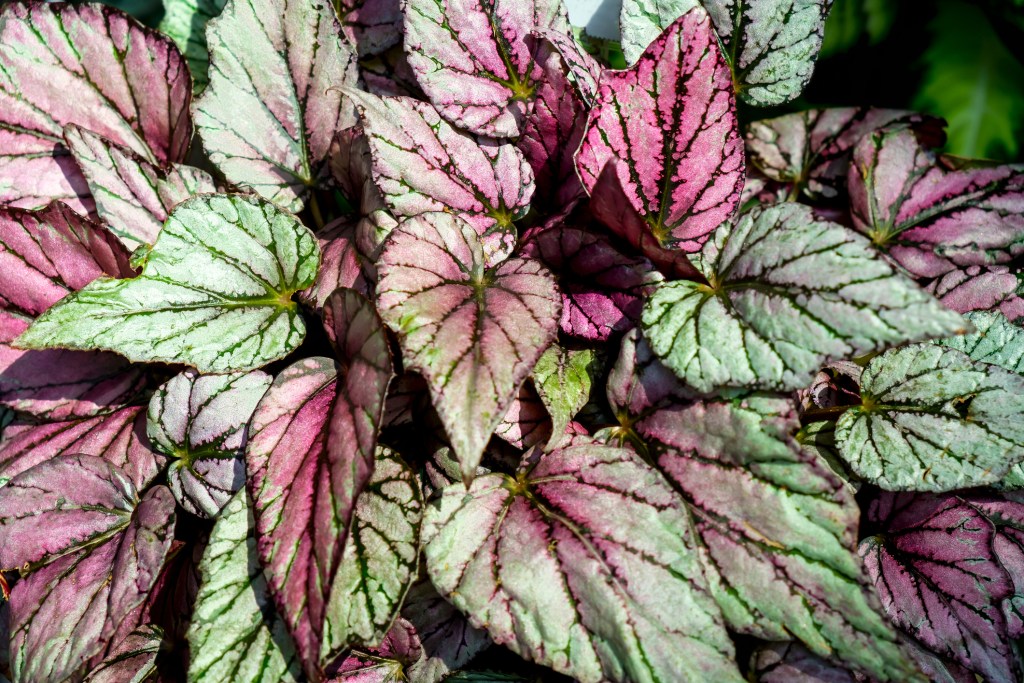
Begonia rex
One of the most ubiquitous types of begonias, the begonia rex can tolerate a fair amount of low light, although it does best in bright indirect light. This variety of begonias typically comes with stunning leaves that feature swirls of green, burgundy, and silver. They tolerate dry air better than many begonia species but will appreciate humidity. To share your begonia rex, simply divide the roots when you repot your plant every one to two years.
Begonia exotica
Originally from New Guinea, this shrubby species features wing-shaped, dark green leaves with thick bands of metallic red. When it grows, prune it to keep it from getting leggy and stake it to keep it upright, as it’ll shoot up anywhere between two to three feet tall. With this begonia, pay special attention to humidity to keep its leaves lush and healthy. The exotica does well in warm temperatures and will appreciate having its soil slightly dried out in between waterings.
Begonia camouflage
The begonia camouflage flaunts swirls of mottled green and warm red leaves, yielding flower spikes in the summer. If you keep your plant outdoors, make sure that it comfortably resides in a shady spot so that its leaves don’t burn. Because it has rhizomes, the best way to share it is by way of root division during the growing season.
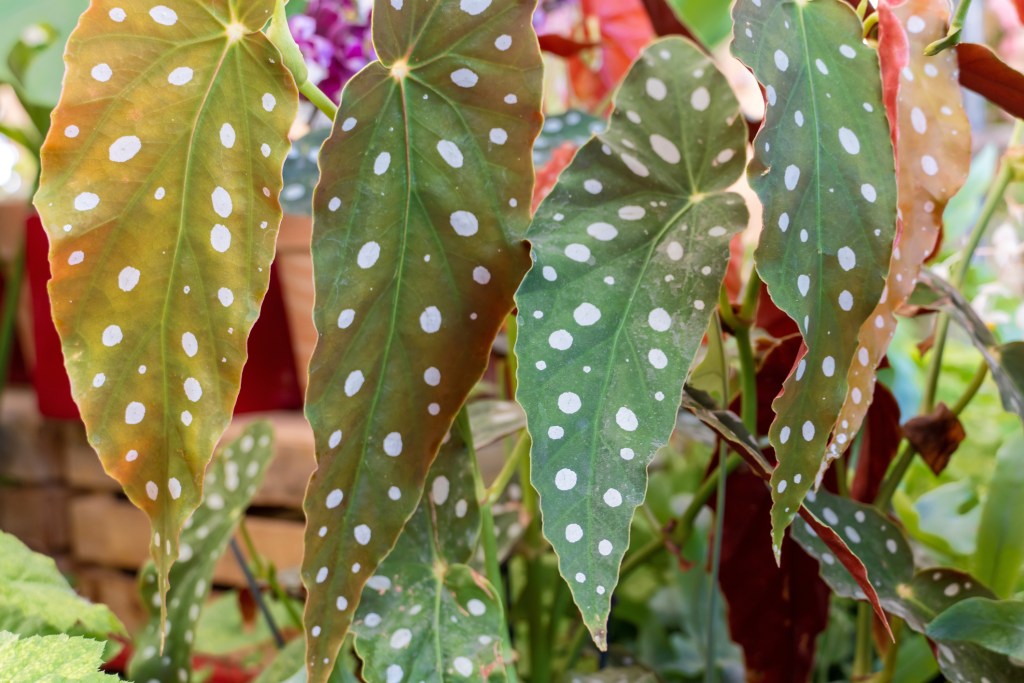
Begonia polka dot
The polka dot begonia features white polka-dotted green leaves with red undersides. It can grow up to two feet tall and yield red and silver flowers during the growing season. As with most begonias, the polka dot enjoys moderate humidity. While it does like moist soil as opposed to dry, you never want your potting mix to feel soggy. To propagate this begonia, simply take stem cuttings, removing lower leaves and placing exposed nodes in water to root. The great news is that pruning this variety back will help it grow even bushier, so you don’t have to worry about over-pruning.
Begonia foliosa
This shrubby South American begonia features tiny leaves that almost resemble fronds, which is why it’s commonly referred to as the “fern begonia.” In addition to small leaves, it also features thin branches and white blooms in the growing season, which make it perfect as a show-stopping hanging basket plant. In a way, you’ll want to treat this begonia like a fern, as it appreciates humidity and prefers cooler temperatures to thrive.
Begonias may be finicky, but mastering their care to nourish their beautiful leaves and blooms is definitely worth your effort. For most varieties, you’re on the right track if you give your plant a shady spot with indirect light and a source of adequate humidity. Whether you grab a begonia rex with silvery leaves or a foliosa with dainty flowers, you’re in for a stunning plant.

